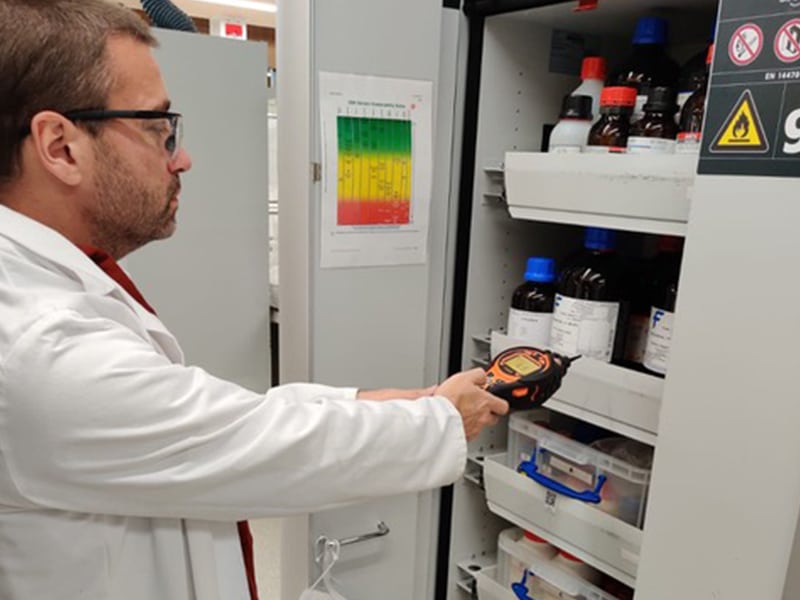
ION Science has supplied the University of Nottingham’s School of Chemistry with its flagship Tiger VOC (Volatile Organic Compounds) Detector.
Following complaints about strong chemical smells in their labs, the University of Nottingham School of Chemistry team were compelled to introduce additional safety measures in the event of ventilation system failure, accidents, leaks or other potentially hazardous incidents. These measures came in the form of the Tiger VOC gas detector.
The Tiger handheld VOC gas detector provides a dynamic detection range of 0 to 20,000 parts per million (ppm) with a minimum sensitivity of 0.001ppm (1 ppb), which the company claims is the the widest measurement range of any other VOC detector on the market. This portable, handheld detector has a fast response time of just two seconds and is just as quick to clear down. Long-life rechargeable Lithium-ion batteries allow for up to 24 hours of use, whilst fast battery charging allows the instrument to be fully charged in 6.5 hours, with 8 hours of use achieved from 1.5 hours charge.
ION Science’s UK distributor, Shawcity, supplied the detector, allowing the team to further monitor air quality at the School of Chemistry’s GSK Centre for Sustainable Chemistry. As the first VOC detector used by the university, one of the key factors in the purchase was reportedly the Tiger’s ease of use, as well as the technical support offered by Shawcity.
A spokesperson for the University of Nottingham said: “The Tiger is very useful in the lab for both routine inspections of air quality and equipment functionality, as well as for use in emergencies when ventilation equipment has gone down. We are extremely pleased with the product and Shawcity have been helpful throughout.”






